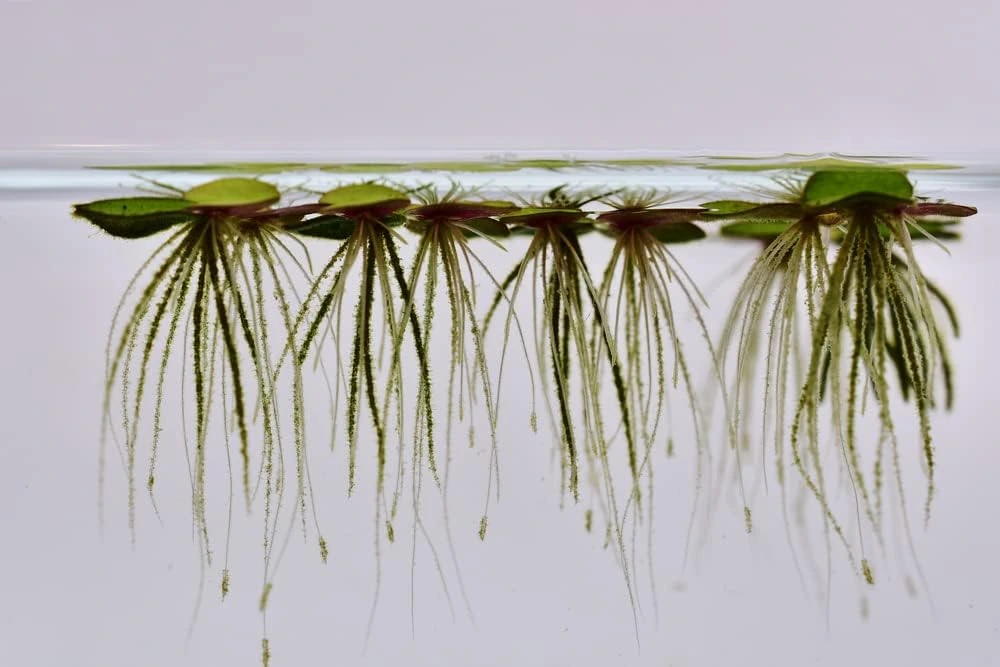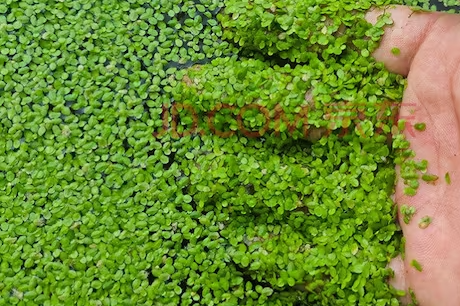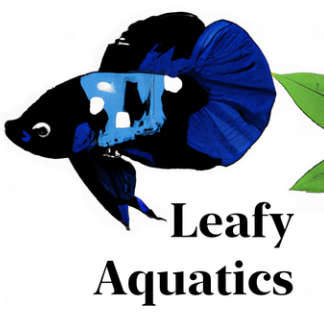The Benefits and Drawbacks of Duckweed
Duckweed is one of the most talked-about plants in the aquarium hobby. Some fishkeepers love it. Others avoid it at all costs. This tiny floating plant can transform the look and balance of your tank–sometimes for better, sometimes for worse.
When managed properly, duckweed helps keep water clean, reduces algae, and gives fish a natural cover. But if left unchecked, it can quickly take over your aquarium, blocking light and making maintenance a hassle.
In this guide, we’ll break down the real benefits and drawbacks of duckweed, plus a few simple tips to keep it under control. By the end, you’ll know whether it’s a plant worth adding or avoiding in your aquarium setup.
What is Duckweed?
The Biology of Duckweed
Duckweed belongs to the Lemnaceae family–a group of tiny, free-floating plants that live on the surface of ponds, lakes, and aquariums. The most common types you’ll see are Lemna minor (common duckweed), Spirodela polyrhiza (giant duckweed), and Wolffia, which is actually one of the smallest flowering plants in the world. Some Wolffia species are so small that a single frond can sit on the head of a pin.
What Duckweed Looks Like
Each plant has a flat, oval frond, usually just 1–5 millimeters wide, with thin roots that hang down into the water. These roots absorb nutrients directly from the water, so duckweed doesn’t need to be planted in substrate. That makes it a simple, low-maintenance option for aquarium keepers.

Duckweed grows extremely fast. It reproduces asexually through budding, meaning one frond can turn into many in a short time. Under the right conditions, it can double in amount in just a couple of days.
Natural Habitat and Aquarium Adaptation
In the wild, duckweed thrives in calm, freshwater environments like ponds, lakes, wetlands, and ditches. You can find it growing all over the world, from temperate climates to tropical ones. It plays an important role in nature by providing shade and shelter for fish and insects, and helping clean the water by absorbing excess nutrients like nitrogen and phosphorus.
How Duckweed Adapts to Aquariums
In home aquariums, duckweed often shows up by surprise. It might hitch a ride on new fish, plants, or decorations without you even noticing. Once it’s in your tank, it quickly makes itself at home.
Duckweed can handle a wide range of conditions, thriving in water with a pH between 5.0 and 9.0 and temperatures from 60°F to 90°F. That makes it one of the hardiest aquarium plants out there. Its adaptability is part of what makes it so useful, but also what earns it a reputation as a bit of a pest.
For beginners, duckweed’s simplicity is a big plus. It doesn’t need CO₂ systems, fertilizers, or any special substrate to grow. But it does require attention, because if left unchecked, it can cover the surface fast and block out light for other plants.
The Benefits: Why Duckweed Can Be a Friend
Natural Water Purification
One of duckweed’s biggest benefits is its ability to naturally clean aquarium water. This tiny plant acts like a living filter, soaking up extra nutrients such as nitrates, phosphates, and even small amounts of heavy metals. By removing these pollutants, duckweed helps balance your tank and keeps the water clear.
As it absorbs nutrients, duckweed also starves algae of what it needs to grow. That means fewer algae blooms and less green buildup on glass and decorations. In a heavily stocked 10-gallon tank, duckweed can noticeably lower nitrate levels, which means fewer water changes and a more stable environment for your fish.
Why Duckweed Works So Well in Low-Tech Tanks
Duckweed really shines in shrimp tanks, nano tanks, and other low-tech setups. It can help control total dissolved solids (TDS) and reduce chemical oxygen demand (COD), keeping the ecosystem balanced without the need for extra equipment.
For aquarists who want a natural, self-sustaining setup, duckweed is a great option. It supports a healthy, low-maintenance aquarium while mimicking the way real freshwater habitats clean themselves.
Shade, Oxygen, and Nutrition
Duckweed does more than just clean your aquarium water, it also helps create a healthier environment for your fish and plants.

During the day, duckweed releases oxygen through photosynthesis, improving water quality and supporting fish and invertebrates. The layer of floating leaves provides gentle shade, which helps regulate water temperature and prevents overheating, especially in tanks exposed to bright lights or direct sunlight.
This shade can also reduce stress for light-sensitive species like tetras, dwarf shrimp, and other small fish that prefer dimmer conditions.
A Natural Food Source and Shelter
Duckweed is surprisingly nutritious. It’s packed with protein, vitamins, and minerals, making it a great snack for herbivorous fish like goldfish, guppies, mollies, and tilapia. Even shrimp species, like cherry shrimp, love grazing on it.
In breeding tanks, duckweed’s fine roots create a safe hiding spot for fry, protecting them from larger fish. Those same roots also collect biofilm, a natural food source that helps support baby fish and shrimp.
Aesthetic and Sustainable Appeal
When used in moderation, duckweed can make any aquarium look more natural. A light layer floating on the surface gives the tank a calm, pond-like feel. It softens the look of hardscape elements like rocks and driftwood and can even hide heaters, filters, and cables for a cleaner, more organic appearance.
An Eco-Friendly and Beginner-Friendly Plant
Duckweed isn’t just pretty, it’s practical and sustainable too. It plays a role in eco-friendly aquarium keeping by helping reduce waste and improve water quality naturally. Outside the aquarium world, it’s even being studied for use in biofuel production and animal feed, thanks to its fast growth and high nutrient content.
For beginners, duckweed is an easy introduction to live plants. It doesn’t need special equipment, fertilizers, or lighting to thrive. Its flexibility makes it a great fit for aquariums and outdoor ponds, bringing both beauty and function to any setup.
Quick Summary:
The Benefits of Duckweed
- Acts as a natural filter, absorbing nitrates, phosphates, and other pollutants.
- Reduces algae growth and keeps aquarium water clear.
- Provides shade, oxygen, and temperature control for fish and shrimp.
- Serves as a nutritious food source and safe shelter for fry.
- Adds a natural, pond-like look to tanks while hiding equipment.
- Thrives in low-tech setups, supporting eco-friendly, low-maintenance aquariums.
Ever seen a clever DIY ring floating atop an aquarium full of Duckweed? One user on Reddit built “duckweed portals” from airline tubing to corral the coverage and turn surface chaos into a neat floating feature.
The Drawbacks: When Duckweed Becomes a Foe
Rapid Overgrowth Issues
Duckweed grows fast, often too fast. In tanks with lots of light and nutrients, it can double in size every 2–3 days. This rapid growth can quickly cover the water’s surface, forming a thick, dense mat.
A heavy duckweed layer blocks sunlight from reaching submerged plants like Anubias or Java fern, which can stunt their growth or even kill them. It also limits gas exchange at the surface, reducing oxygen at night when photosynthesis stops. This can stress fish, especially surface-dwellers like bettas or gouramis.

If left unchecked, thick mats may trap debris and worsen water quality. Regular monitoring and management are key to keeping duckweed from taking over your aquarium.
Maintenance and Aesthetic Challenges
Managing duckweed can be surprisingly time consuming. Weekly removal with a net or by hand is often needed to keep it from clogging filters, pumps, or overflow systems. Even small fragments left behind can regrow quickly, and moving equipment between tanks can spread it unintentionally.
New batches of duckweed may also bring unwanted guests like pest snails, hydra, or pathogens, so careful quarantine is important.
Impact on Tank Appearance and Ecosystem
From an aesthetic perspective, an overgrown layer can make a tank look messy and hide the colors of your fish or the beauty of your aquascape. In planted tanks or for bottom dwellers like corydoras, reduced light can disrupt the ecosystem, encourage algae growth, and stress species that need open swimming space.
Quick Summary:
Duckweed Drawbacks
- Grows extremely fast, doubling in size every 2–3 days under ideal conditions.
- Can form thick mats that block sunlight and stunt submerged plants.
- Limits surface gas exchange, reducing oxygen at night and stressing fish.
- Traps debris, which can worsen water quality if not managed.
- Requires regular maintenance to prevent clogging filters, pumps, or overflow systems.
- Small fragments can regrow quickly, and moving equipment may spread it.
- May introduce pests like snails, hydra, or pathogens if not quarantined properly.
Reddit posts in r/aquariums like the one below are extremely common. Aquarium keepers will spot one or two duckweed floaters, and within a few weeks, boom, the entire tank has been covered in a lush green mat.
How to Manage Duckweed in Your Aquarium
Safe Introduction Methods
Start small when adding duckweed to your aquarium. Buy it from trusted sources or fellow hobbyists to reduce the risk of pests. Quarantine new duckweed in a separate container for 7–10 days, checking for snails, algae, or other hitchhikers. Rinse it gently before adding a portion to your tank. Begin with enough to cover about 10% of the surface and watch how it spreads over a week to understand its growth in your setup.
Strategies for Controlling Growth
Keeping duckweed under control takes consistent effort but is manageable. Manual removal is the most effective method, scoop out excess weekly with a fine net or your hands. Aim to maintain 20–50% surface coverage for a balanced look and function.
Increasing water flow with powerheads, airstones, or a stronger filter can slow growth by disturbing the still water duckweed prefers. Natural predators like goldfish, koi, or compatible snails (e.g., nerite snails) also help keep populations in check. Chemical controls exist, but use them cautiously as copper-based treatments or herbicides can harm fish, shrimp, or sensitive plants. Regular pruning once or twice a week prevents duckweed from taking over while still keeping its benefits.

Ideal Conditions and Alternatives
For balanced growth, provide moderate lighting of 6–8 hours at low to medium intensity, nutrient levels suited for low-tech tanks, and temperatures between 60–80°F. Test water parameters weekly to avoid nutrient spikes that fuel rapid overgrowth.
If duckweed grows too aggressively, consider floating plant alternatives like red root floater, water lettuce, or salvinia. These plants offer similar benefits—shade, nutrient absorption, and aesthetic appeal—but grow more slowly and are easier to remove. For instance, frogbit’s larger leaves make it simpler to scoop out, making it ideal for smaller or low-maintenance tanks.
Quick Summary:
Managing Duckweed in Your Aquarium
- Quarantine new duckweed for 7–10 days to prevent pests.
- Start with a small portion, covering about 10% of the surface, and monitor growth.
- Remove excess weekly using a fine net or your hands to maintain balance.
- Increase water flow or use natural predators (goldfish, koi, nerite snails) to control spread.
- Use chemical controls sparingly, copper-based treatments can harm fish and plants.
- Maintain moderate light, nutrients, and temperature for steady growth.
- Consider slower-growing floating plants like frogbit, water lettuce, or salvinia as alternatives.
Duckweed in Aquariums: At a Glance
Benefits:
- Acts as a natural filter, absorbing excess nutrients and reducing algae growth.
- Provides shade, oxygen, and a nutritious food source for fish and invertebrates.
Drawbacks:
- Grows extremely fast and can form dense mats that block sunlight and reduce oxygen.
- Requires regular maintenance and careful monitoring to prevent spreading pests and harming submerged plants.
Care tips:
- Maintain moderate lighting, water flow, and nutrient levels; prune weekly or use natural predators to control overgrowth.
- Start with a small portion, quarantine new duckweed, and monitor growth carefully.
Final Thoughts
Duckweed in aquariums is a double-edged sword: a friend when it purifies water, feeds fish, and adds natural beauty, but a foe when it overruns your tank, demanding constant upkeep. Its role depends on your setup and dedication to maintenance. Aquarists with nutrient-heavy or algae-prone tanks may find the benefits of duckweed outweigh its challenges, while those prioritizing a polished, low-effort display might prefer alternatives like frogbit. Start small, monitor closely, and use our tips for controlling duckweed growth to make it work for you.

